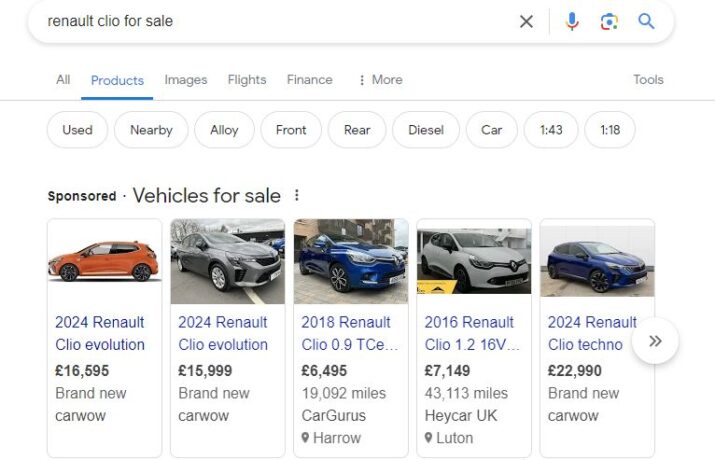PPC
Google Ads’ Vehicle Listing Ads (VLA) now live in the UK, Germany & France

Thanks to Christopher Bell, Head of PPC at Kelkoo, for bringing this one to our attention.
Vehicle Listing Ads (VLA) on Google Ads are now live and open for Beta-listing in the UK, DE and FR with NL, IT and ES following in Q2. Previously it’d only been available in open beta in the US, Canada and Australia.
What is Vehicle Listing Ads on Google Ads?
Google’s Vehicle Listing Ads provide a powerful tool for auto advertisers to showcase their full inventory to potential customers actively searching for vehicles on Google. This innovative ad format is designed to enhance the car shopping experience by presenting key information, including images, make, model, price, mileage, and the advertiser’s name, directly within the search results. It’s an effective way to connect with interested buyers and generate more qualified leads.

Currently, Vehicle Listing Ads are accessible through the classic version of the Merchant Center, as they are not yet available in the Merchant Center Next. These ads are offered in a select number of countries, with an open beta running in the USA, Canada, and Australia with UK, Germany & France recently added with Netherlands, Italy and Spain expected soon.
Key Features and Benefits
- Highly Qualified Leads: By showcasing essential car details upfront, Vehicle Listing Ads ensure that clicks come from genuinely interested buyers.
- Optimized for Sales: These ads are designed to support both online leads and offline shop visits.
- Automated Targeting: Leveraging Google’s AI, the ads automatically present the most relevant listings based on user searches, maximizing the chances of a match.
Eligibility and Inventory
Vehicle Listing Ads support a wide range of inventory, including new and used cars, from dealers, retailers, aggregators, or original equipment manufacturers (OEMs). However, they exclude private sellers, individuals, auto brokers, and certain vehicle types like recreational and commercial vehicles.
How They Work
To participate, advertisers need to upload a vehicle data feed to Merchant Center, detailing each vehicle’s specifications such as make, model, price, mileage, and color. This feed enables Google to align user searches with the most appropriate vehicle listings.
Additionally, running Vehicle Listing Ads requires setting up Performance Max campaigns with vehicle feeds in Google Ads, linking both Google Ads and Merchant Center accounts, and a Google Business Profile for dealership locations.
Getting Started
If you’re an auto advertiser in the US, Canada, Australia, UK, France or Germnay looking to tap into this powerful advertising tool, start by contacting Google to express your interest and get further guidance on setting up your Vehicle Listing Ads.


















